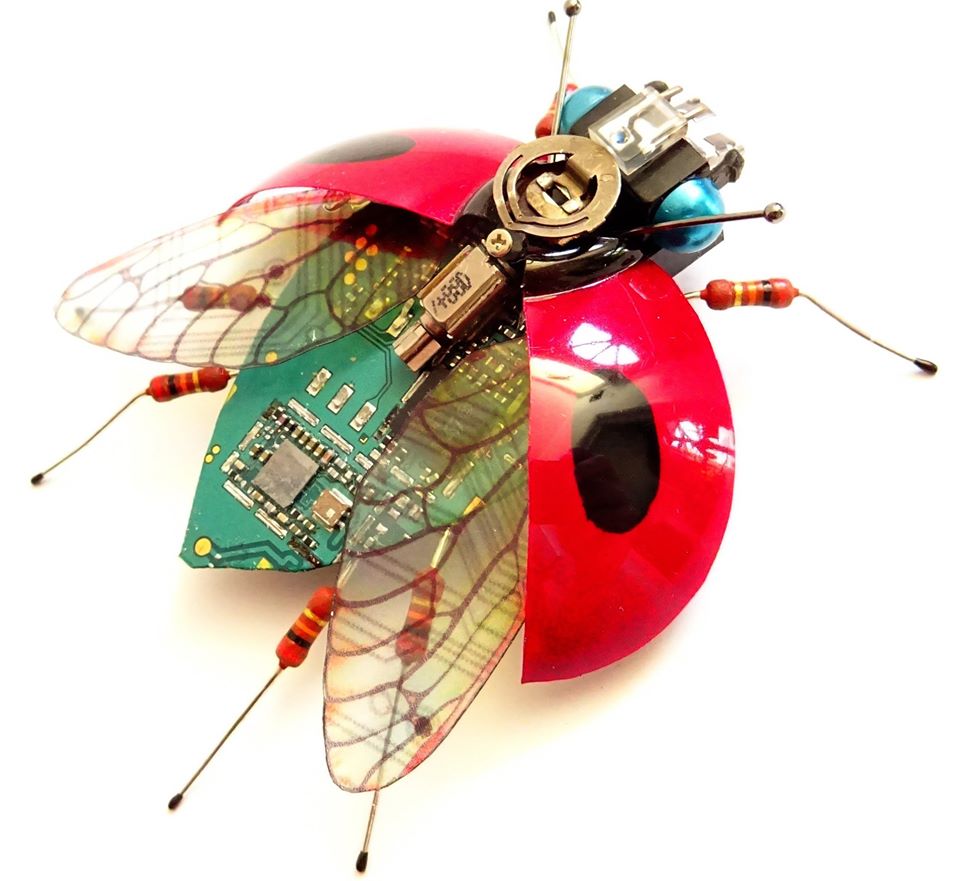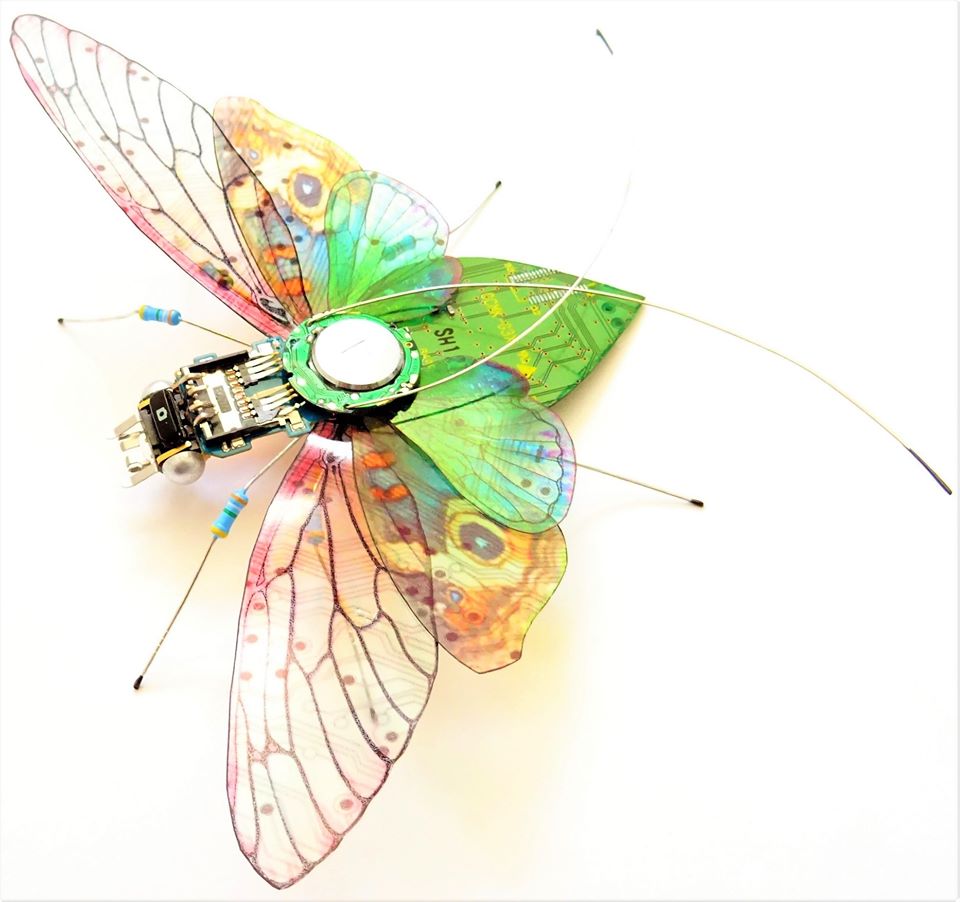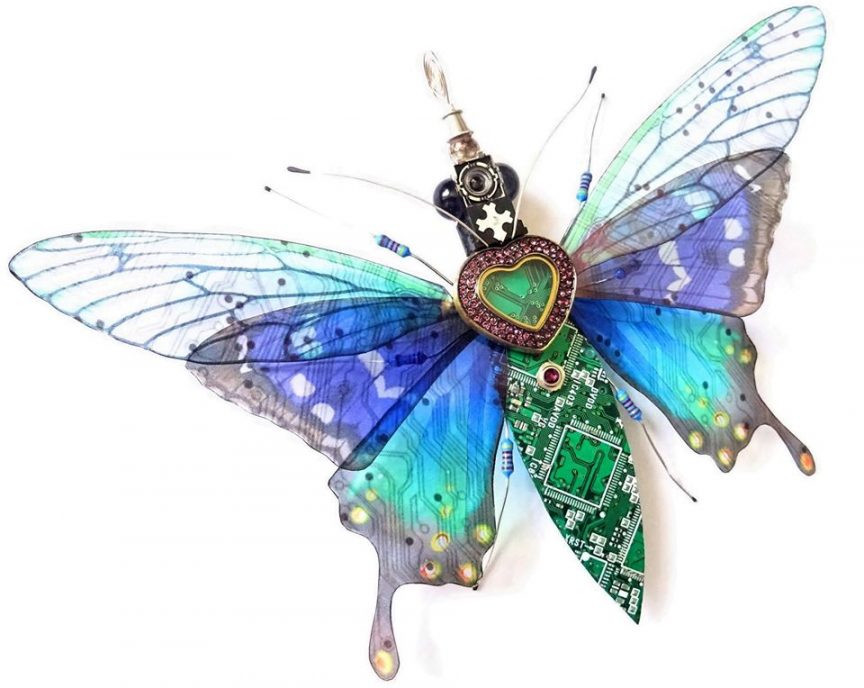Name: Julie Alice Chappell
Which came first in your life, the science or the art?
My love of nature and art coincided at a very early age. I view the sciences and art as not being separate, but as being in a symbiotic relationship with one another. I find art to be a free-flowing and abstract way to experiment, see, and understand the natural world. The fascination never ceases.
“I find art to be a free-flowing and abstract way to experiment, see, and understand the natural world.”
Julie Alice Chappell



Which sciences relate to your art practice?
Biology, mostly the world of bugs, insects, and sea life, is what relates to my work. But also the genius of humankind’s technological advances and inventiveness, as seen in the tremendous and ever increasing leaps forward in computer technology. Combining biology and computer technology as sculptural artworks gives me a perfect way to express my concerns about planned “obsolescence” and its effects on the natural world.
“Combining biology and computer technology as sculptural artworks gives me a perfect way to express my concerns about planned ‘obsolescence’ and its effects on the natural world.”
Julie Alice Chappell

What materials do you use to create your artworks?
The materials I use are obsolete circuit boards and computer gadget components. I find these objects to be perfect, precise, and beautiful with all their intricacy, shimmering metallic colours, and perfect design. Yet, they are never meant to be seen by human eyes, hidden inside metal casings until they become obsolete and are thrown out to be replaced but the newest technology. I like to create my pieces so that the components can be recognized. But as these objects are transformed into artworks, they become purely aesthetic with a total loss of their former functionality. I sometimes use other upcycled materials, such as plastic packaging, or older mechanical components, such as clockwork cogs. I will often add embellishments, such as crystal jewels, to add a sense of renewal and to symbolize nature’s preciousness.


Artwork/Exhibition you are most proud of:
I am proud of all the the exhibitions of my work, but being invited to go to California to show my work was the best experience! I also got to meet local school children whilst I was there who were recreating their own versions of my Circuit Board Insects. It was a wonderful adventure, and I was treated so well. My other proudest moment was to have been featured in Ripley’s Believe it or Not, Children’s Scholastic Annual 2017.
Which scientists and/or artists inspire and/or have influenced you?
The are so many artists who inspire me. I have two firm favourites:
Italian born, London-based artist Leonardo Ulian thoughtfully solders colourful electronic components to create beautiful and ethereal looking mandalas, giving a sense of spirituality to electronics, almost as though to suggest a modern-day worship of computer technology.
The other is Italian artist Franco Recchia with his architectural sculptures. Recchia creates stunning cities from circuit boards and the inner components and metal casings found inside old computers.
Both of these artists use the materials that I use and for many of the same reasons but with entirely different results. It is exciting to find other artists who see and admire what I see in these unusual art materials.

For more by Julie Alice Chappell, visit her Instagram, Facebook, or website.
Share this Post

